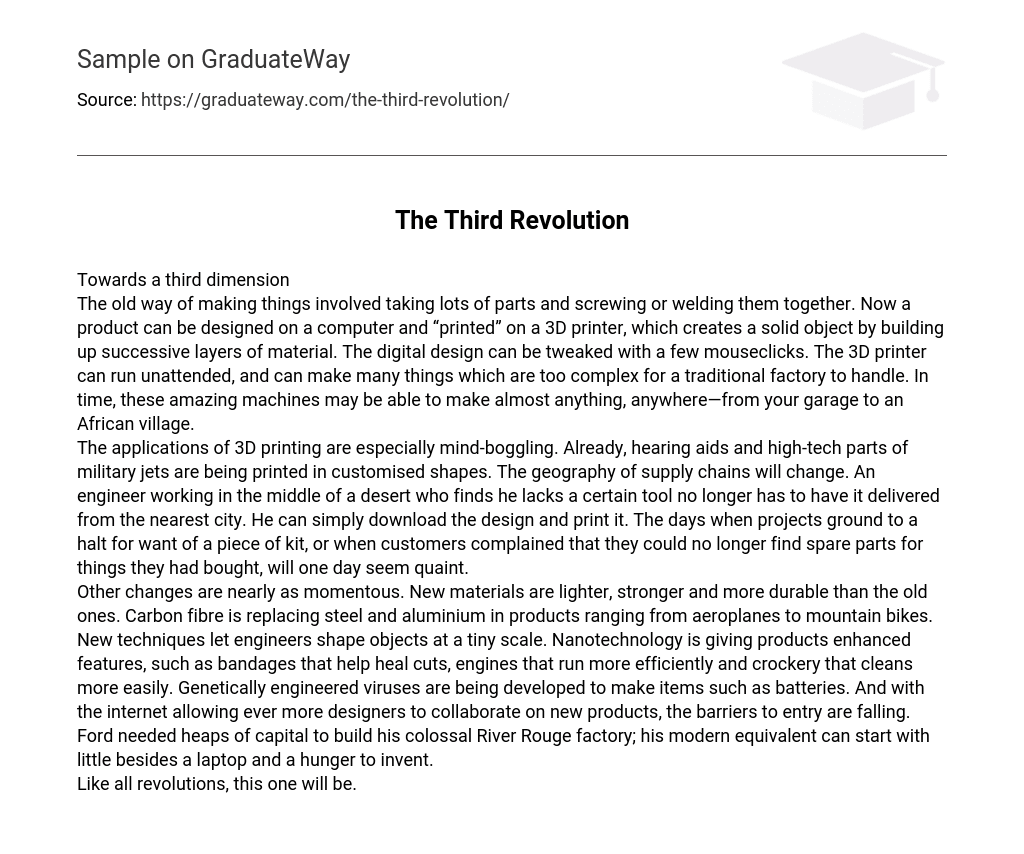Towards a third dimension
The old way of making things involved taking lots of parts and screwing or welding them together. Now a product can be designed on a computer and “printed” on a 3D printer, which creates a solid object by building up successive layers of material. The digital design can be tweaked with a few mouseclicks. The 3D printer can run unattended, and can make many things which are too complex for a traditional factory to handle. In time, these amazing machines may be able to make almost anything, anywhere—from your garage to an African village.
The applications of 3D printing are especially mind-boggling.
Already, hearing aids and high-tech parts of military jets are being printed in customised shapes. The geography of supply chains will change. An engineer working in the middle of a desert who finds he lacks a certain tool no longer has to have it delivered from the nearest city. He can simply download the design and print it. The days when projects ground to a halt for want of a piece of kit, or when customers complained that they could no longer find spare parts for things they had bought, will one day seem quaint.
Other changes are nearly as momentous.
New materials are lighter, stronger and more durable than the old ones. Carbon fibre is replacing steel and aluminium in products ranging from aeroplanes to mountain bikes. New techniques let engineers shape objects at a tiny scale. Nanotechnology is giving products enhanced features, such as bandages that help heal cuts, engines that run more efficiently and crockery that cleans more easily. Genetically engineered viruses are being developed to make items such as batteries. And with the internet allowing ever more designers to collaborate on new products, the barriers to entry are falling.
Ford needed heaps of capital to build his colossal River Rouge factory; his modern equivalent can start with little besides a laptop and a hunger to invent.
Like all revolutions, this one will be.





